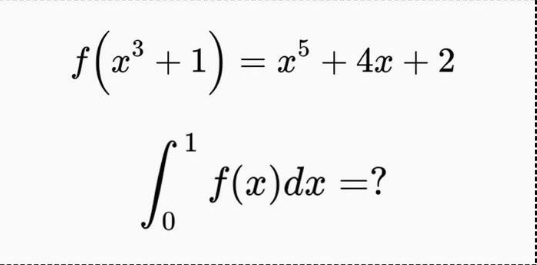
AlgebraQuestion and Answers: Page 230
Question Number 127481 Answers: 2 Comments: 1

Question Number 127429 Answers: 0 Comments: 1
$$\mathrm{6}\boldsymbol{\div}\mathrm{3}\left(\mathrm{2}\right)=??? \\ $$
Question Number 127306 Answers: 0 Comments: 6

Question Number 127301 Answers: 0 Comments: 2

Question Number 127344 Answers: 2 Comments: 0
Question Number 171745 Answers: 1 Comments: 0
Question Number 171743 Answers: 0 Comments: 2
$${solve}:\:\mathrm{12}^{{x}−\mathrm{2}} =\mathrm{4}^{{x}} ,\:{find}\:{x} \\ $$
Question Number 127155 Answers: 0 Comments: 1
Question Number 127144 Answers: 1 Comments: 0

Question Number 127094 Answers: 1 Comments: 1

Question Number 127090 Answers: 4 Comments: 0
Question Number 127006 Answers: 1 Comments: 0
Question Number 126990 Answers: 1 Comments: 0
Question Number 126989 Answers: 1 Comments: 0
Question Number 126966 Answers: 0 Comments: 2

Question Number 126952 Answers: 3 Comments: 1
Question Number 126950 Answers: 1 Comments: 0

Question Number 126935 Answers: 0 Comments: 0
Question Number 126931 Answers: 1 Comments: 0
Question Number 126930 Answers: 1 Comments: 4
$$\:\:\sqrt{\mathrm{1997}×\mathrm{1996}×\mathrm{1995}×\mathrm{1994}+\mathrm{1}}\:=? \\ $$
Question Number 126887 Answers: 2 Comments: 2
Question Number 126882 Answers: 1 Comments: 0
Question Number 126845 Answers: 3 Comments: 0
Question Number 126723 Answers: 0 Comments: 2

Question Number 126702 Answers: 1 Comments: 0
Question Number 126701 Answers: 2 Comments: 0
Pg 225 Pg 226 Pg 227 Pg 228 Pg 229 Pg 230 Pg 231 Pg 232 Pg 233 Pg 234
